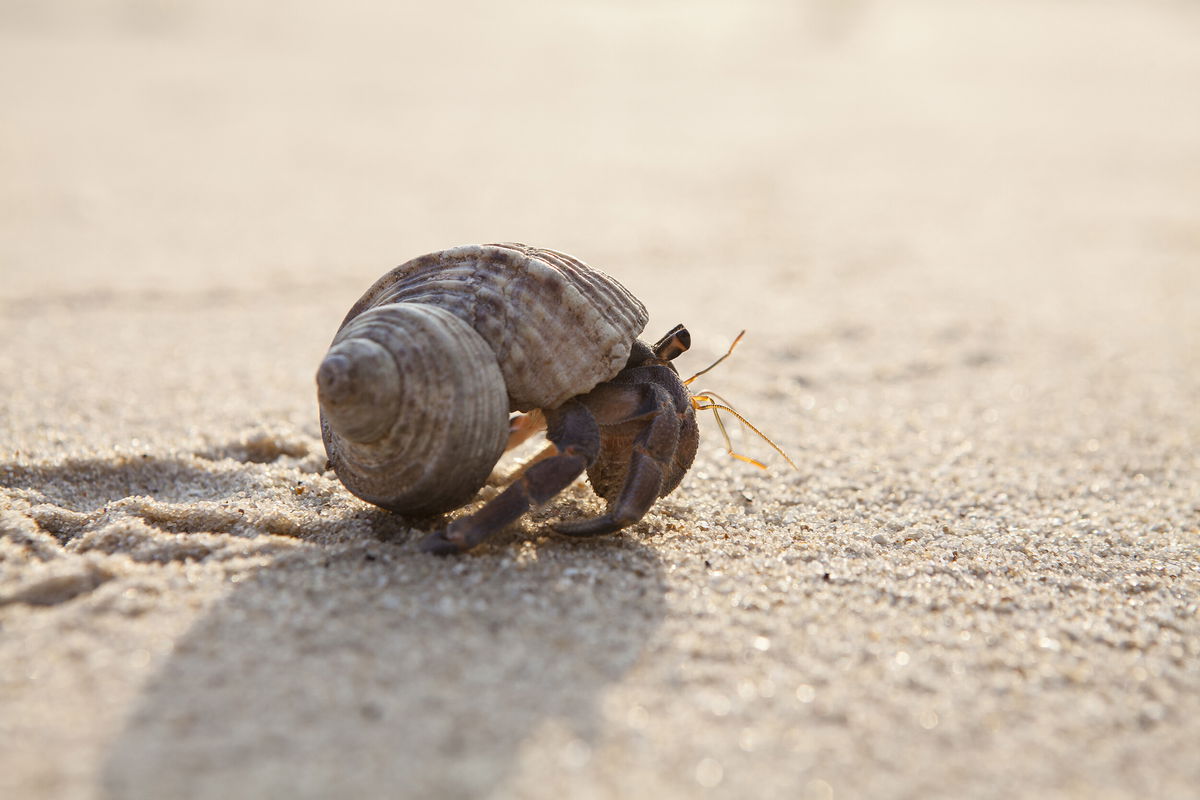Discarded tires in the oceans are trapping hermit crabs, with no way out

Through a phenomenon called "ghost fishing
By Sherry Liang, CNN
Hermit crabs are finding their way into discarded tires in the ocean — and they can’t get out, a new study from Hirosaki University found.
The concave interior of a car tire can trap hermit crabs that go there in search of food and shelter. The study refers to this phenomenon — when marine animals get caught in human litter, such as fishing nets — as “ghost fishing.”
Atsushi Sogabe, first researcher on the study and associate professor at Hirosaki University, initially noticed this during a 2012 survey of Mutsu Bay in Japan. While monitoring pipefish along Mutsu Bay, he saw several shells in a discarded tire, some belonging to hermit crabs.
“I thought that the hermit crab that had invaded the inside of the tire could not escape due to the recurved inner structure of the tire and consequently die,” Sogabe said in an email to CNN. “I wanted to prove this to myself.”
The hermit crab shells found in this survey were heavily damaged, and researchers suggested this was a sign of cannibalism or competition for lodging among hermit crabs that were stuck.
Through experiments in an aquarium and the ocean, the researchers studied whether hermit crabs would be able to escape the tires. Over the course of a year, scientists collected and released the crabs monthly, observing nearly 1,300 hermit crabs that were trapped in the tires. (Don’t worry — the hermit crabs were only used once and released near where they were collected.)
None of the hermit crabs that found their way into the tires could escape.
“The significance of this study is that it shows that not only the chemical and physical properties of the tire, but also the shape of the tire can have a negative impact on marine life,” Sogabe said.
The vultures of the sea
Hermit crabs are the “vultures of the intertidal and marine environments,” said Jennifer Lavers, a lecturer in marine sciences at the University of Tasmania. They turn and circulate soil on the shore, helping plants like palm trees propagate and regrow. In the ocean, they’re scavengers and cleaners of the seabed when other organisms die.
The crabs also sit at the bottom of the food chain for fish and shorebirds, providing a reliable source of food.
“If we were to lose these crab species or they were able to become substantially less abundant, that has implications for sediment turnover. It has implications for forest regeneration and growth. It has implications for the tidiness of our beach and ocean environments because potentially you don’t have the vultures coming in and cleaning things up,” Lavers said.
After tires reach the end of their “life cycle” — approximately six to 10 years, according to the National Highway Traffic Safety Administration — some are recycled and repurposed into track fields or new tires. But many are dumped in bodies of water.
Their shape isn’t the only problem when tires end up in the ocean. Wear and tear of tires contributes up to 10% of microplastics in the ocean, according to a 2017 report from researchers at the Open University of the Netherlands.
Other forms of ocean and beach pollution, such as plastic bottles and containers, are also harming hermit crabs. Lavers led a 2019 study in the Cocos (Keeling) Islands that found hermit crabs were confusing plastic containers for shells, which trapped one or two crabs every square meter. She said the new study from Hirosaki University expands research on entrapment to another part of the world, illustrating a problem “more widespread than we originally thought.”
Abandoned fishing gear like nets and lines can entangle larger animals like sea turtles — more than 300 were found dead off the coast of Mexico in 2018.
“This is actually likely to be a significant issue,” Lavers said. “It’s not just happening on beaches with drink bottles, but various types of debris including car tires, and it’s likely impacting many more species in a variety of habitats that we perhaps didn’t originally anticipate.”
One tire at a time
Lavers said not all hope is lost. Ocean conservation efforts — including picking up discarded tires or plastic bottles — might feel daunting on an individual level, but those actions can still benefit the ecosystem by removing intact items and reducing risks of entrapment. Removing these items can also prevent larger objects from breaking down into smaller pieces that animals can ingest.
“I think these studies of crab entrapment really validate and showcase the wildlife benefits of going and doing these cleanups,” Lavers said. “There is a silver lining that I hope it gives people the motivation and the reassurance that cleanups can be and are worthwhile.”
Sogabe said, while the ghost fishing of hermit crabs might seem minor in the face of climate change and microplastics pollution, even a single tire can pose a danger for ecosystems.
“This is a good example of how our casual behavior can have a negative impact on wildlife in unexpected ways,” Sogabe said. “It is important to realize that small changes in the behavior of each of us can make a big contribution to environmental conservation.”
The-CNN-Wire
™ & © 2021 Cable News Network, Inc., a WarnerMedia Company. All rights reserved.